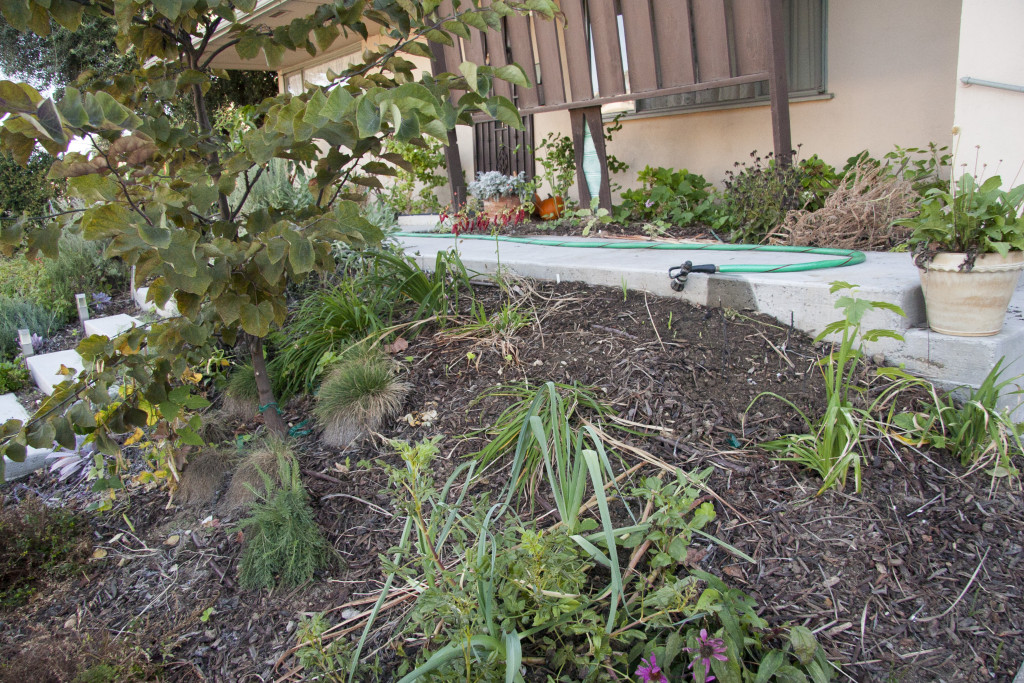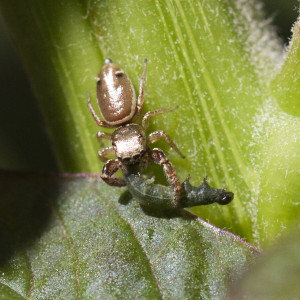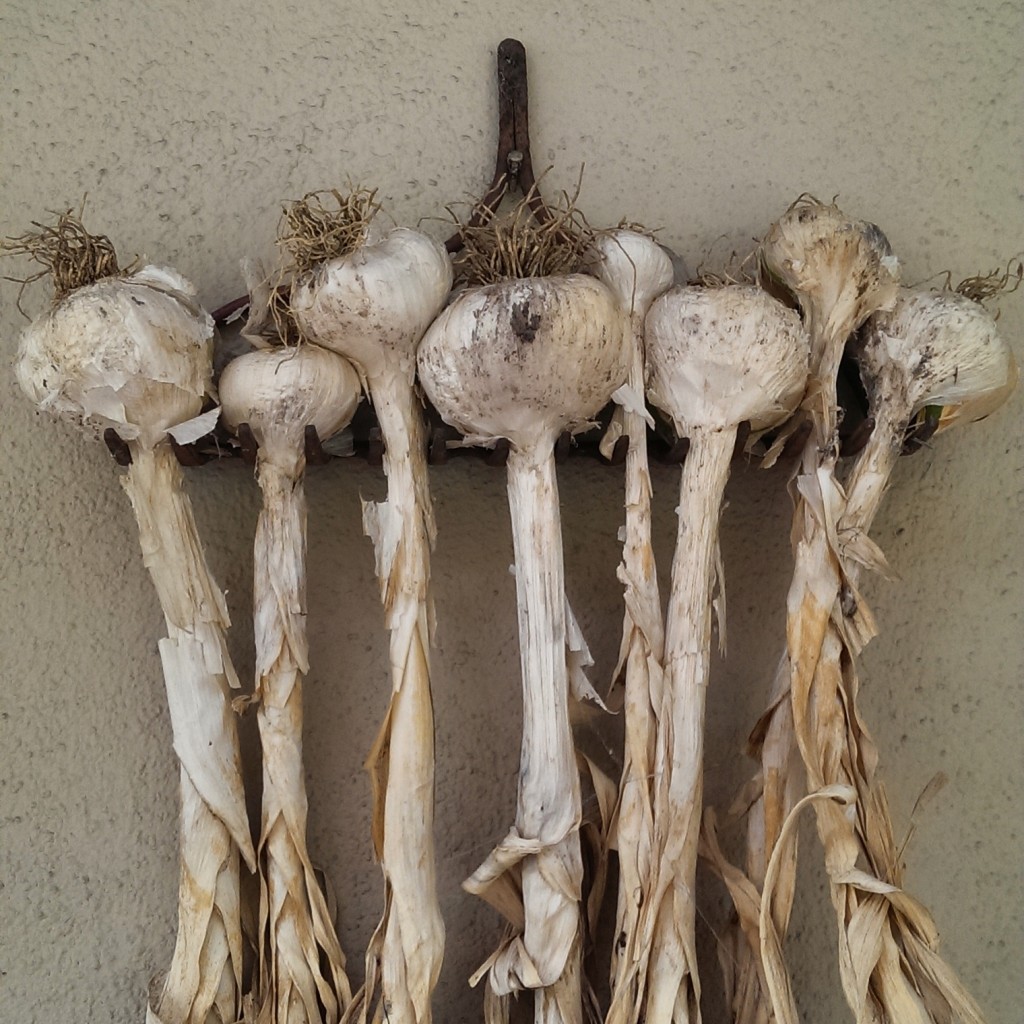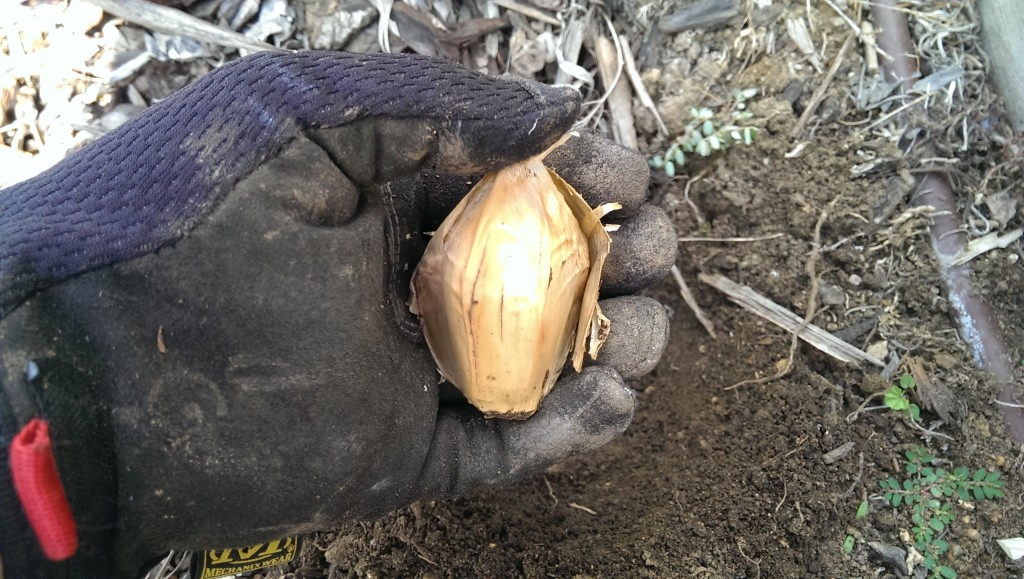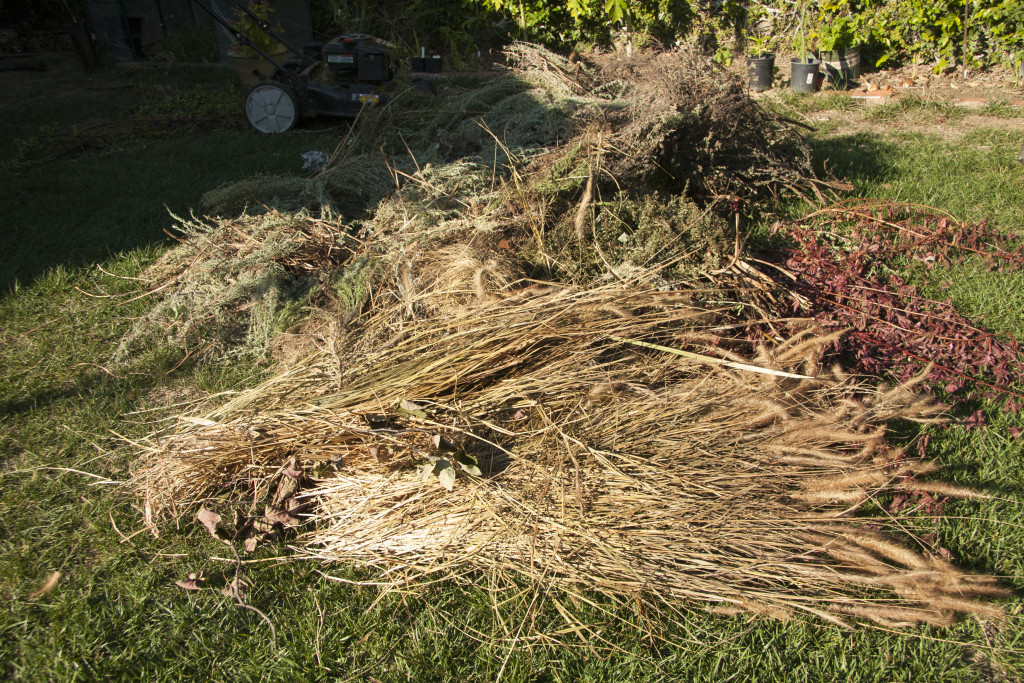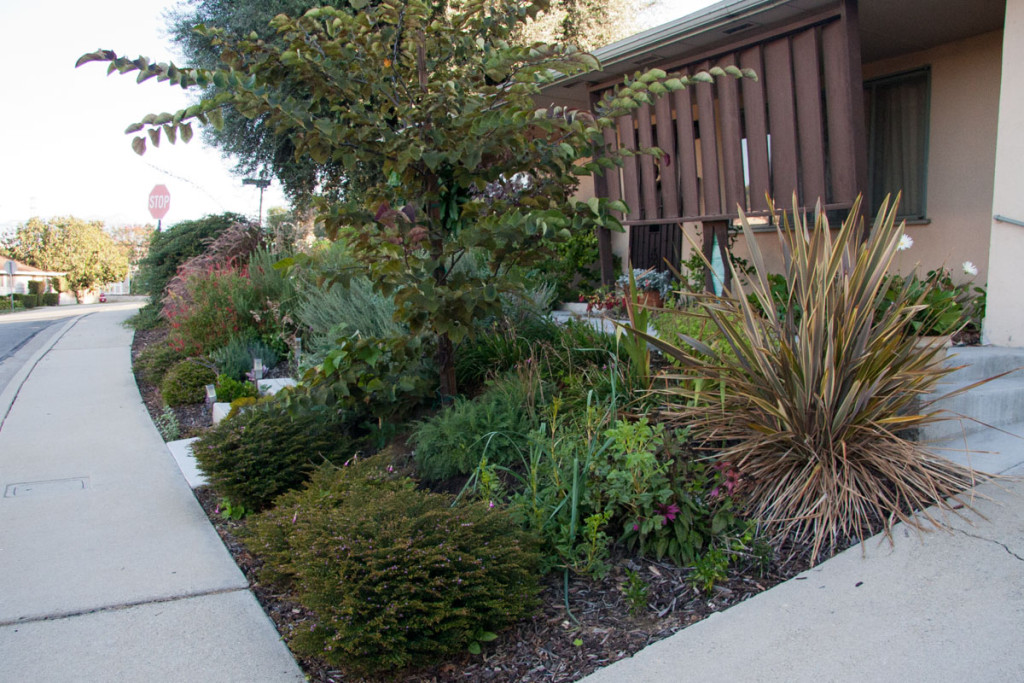Moved The New Zealand Flax
Out in Front Garden it was time for the New Zealand flax (phormium tenax) to give up its spot. The flax was moved to a different part of the yard. In its place a mulberry (morus) tree was planted. The tiny tree was grown from a cutting by my brother.
The spot where the tree lives now has a very awkward transition between the dirt, steps, and concrete walk way. Originally, the flax was planted to mask this awkward transition. The flax offered a good deal of landscape appeal. Other than that, it is somewhat of a maintenance hog. The blades when they die off become dry and fibrous. The dried blades are difficult to cut and thus are difficult to remove. For those considering New Zealand flax as a landscape plant, my advice is to consider the maintenance aspect.
advertisement
With the flax no longer covering the awkward transition a daylily was selected. The ‘Fire of Fuji’ double reblooming daylily (hemerocallis) was divided and planted at the base of the young mulberry tree.
In terms of permaculture design, the mulberry will be allow to grow to about five feet tall. At the base, different plants will make their home through the seasons. In their first season, the mulberry and daylilies will also share ground with elephant garlic and oriental lilies.
